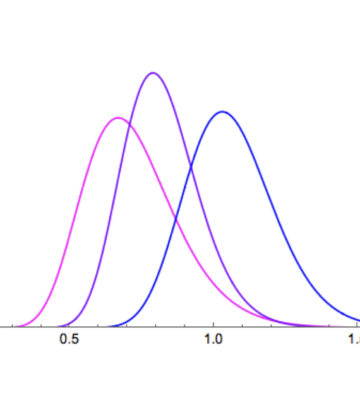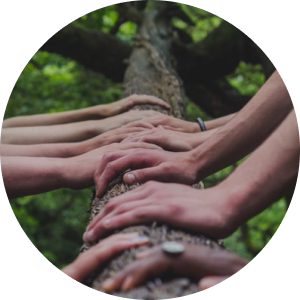How Does WHN Work as an Organization?
1. Which content does the WHN publish?
2. How does WHN decide about what teams to make and what those teams should work on?
3. How does WHN determine the responsibilities and projects for individual members?
4. How do teams make decisions on their projects and their work process?
5. What is the high level organizational structure of WHN?
WHN is based upon an academic model of contribution and participation, similar to how an academic journal works, coupled with a collaborative approach. This participative and flexible setting allows for grassroots initiatives and effective project teamwork when people are able to come together to work on projects based upon their interests.
To understand how decision making is done at WHN, it is important to outline that this is both different from traditional organizations and simpler than may be realized:
1. One of the main types of decisions made at WHN revolves around what WHN publishes, specifically the documents that are made public.
a) Any individual can choose to write something for WHN. They can write it themselves or collaborate with others on the document. The content finishing team can assist in completing the document.
b) Once the document is complete, it is submitted to the editorial board of WHN’s journal, WHN Science Communications, which is published on the WHN website. The editors-in-chief are the point of contact for submission and are ultimately responsible for approval of publication, but it is important to note that the editors-in-chief do not decide what should be written. Their role is to ensure the scientific accuracy, language, formatting, and citations of the document. The editors-in-chief don’t convene to make decisions; each one has the authority to approve a document individually following a review process that includes members of the editorial board. In cases where the editorial board lacks expertise in a particular domain, they may request external reviewers to assess the document before finalizing and approving it. The editors-in-chief’s names are listed on the WHN website’s journal information page, as is standard practice for journals.
2. How does WHN decide about what teams to make and what those teams should work on?
a) WHN encourages individual members to take initiative in forming new teams and assuming responsibility for new projects. This means that the organization’s growth is driven by the individuals who voluntarily choose to participate.
b) Instead of having a centralized decision-making process for WHN projects and efforts, the Growth Division seeks to strengthen teams and to facilitate and enhance collaboration among teams to increase their efficiency in achieving their tasks. This is an ongoing endeavor that is still in its early stages. It is important to note that WHN is only two years old, so the efforts to establish it are still in the initial phases. Due to the absence of a centralized decision-making process, teams are generally considered as “working groups” that come together for a specific period but may not continue indefinitely as priorities and needs evolve as seen by the members.
3. How does WHN determine the responsibilities and projects for individual members?
a) WHN is structurally designed to create opportunities enabling individuals from different walks of life to participate in many different activities. Members can either work on ongoing projects at WHN or initiate new ones. The welcome process at WHN helps identify individuals’ interests and suggests to them relevant teams or projects. The Grow Awareness team assists members in discovering new projects or responsibilities.
b) WHN welcomes individuals to join WHN and participate in its activities. Because it is a welcoming organization, more inclusive than restrictive, it is necessary at times to acknowledge or determine that particular individuals are not engaging in good faith, or are disrupting activities. There are several mechanisms to address these issues. Moderation of disruptive behavior is a responsibility of facilitators (often coordinators or chairs) of team meetings. Moderation across WHN is done through the Grow Awareness Team. There is also an ethics panel that has been central to setting the ethics statement of WHN and addressing issues as a judicial body when extended deliberation is needed, especially when new policies may be necessary. WHN does not tolerate disrespect and lack of appreciation of others who are engaged in the shared effort to confront the pandemic. When such behaviors are evident, swift action by moderators or the ethics panel is triggered.
4. How do teams make decisions on their projects and their work process?
a) Teams have the autonomy to decide on their own projects and are usually open to participation. They also determine the methods they use to work on their projects. However, it’s important to note that this can lead to different teams using multiple platforms and having diverse work patterns.
b) Teams can also regulate the membership within their team. Although it is possible for a WHN team to develop protocols that conflict with the overall mission and atmosphere of WHN, this has not been a problem so far. If such situations arise, they can be addressed as moderation or ethics issues, similar to individual actions (refer to the section above).
5. What is the high level organizational structure of WHN?
WHN is organized into six divisions,
a) the science division, which includes the science and policy group, whose core is the COVID action group, which is the nucleus of multidisciplinary experts around which the WHN was developed. Other science division teams include multiple content generation teams responsible for developing particular topical resources, the content finishing team, data analytics and modeling teams, and research teams;
b) the communications division (com division) that is responsible for the publication and dissemination of WHN content and communications efforts, and includes the com team, the creative team, the launch team, the broadcast team, the social media team, the press team, among others;
c) the platform division is responsible for identifying and facilitating the use of technology platforms, including those for internal communications such as slack, basecamp, and external communications such as the website, and has a growing software development effort currently focused on covidmeetups.com;
d) the community action division (act division), that includes teams engaged in a number of local community actions and specific types of actions or content generation in support of such areas as school safety and healthcare safety. There are growing branches of the act division in multiple languages, with the most developed being German and Spanish;
e) the growth division is responsible for the overall growth of WHN including the improvement of its structure and processes. It is guided by organizational principles of complexity science that points to the need for distributed decision making and functions to effectively address complex environments. Specific teams include the strategy team, the welcome team, the grow awareness team, and the scaleup team;
f) finally, the science literacy and citizen science division (learn division) is just developing to connect science and the public through science literacy courses, and the development of citizen science projects.











